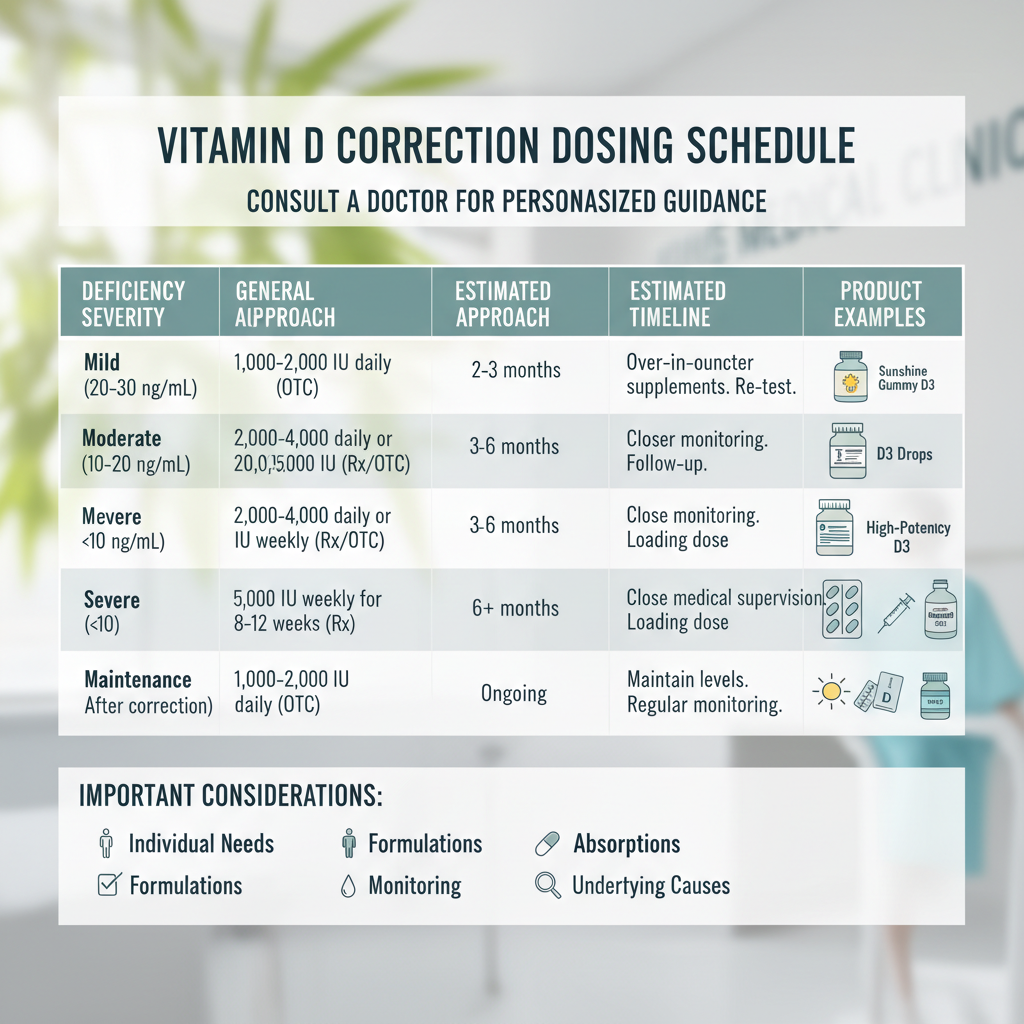
Ever bought a high-potency vitamin D3 supplement on a mission to fix a deficiency—only to freeze at the dosing label, unsure how to correct your levels quickly and safely? You’re not alone. In 2025, with lab tests and potent D3 capsules available on-demand, correcting a deficiency is faster than ever—if you follow the right protocol.
Why Fast Correction Matters (and Why Overshooting Is a Real Risk)
Vitamin D deficiency is still pervasive, especially post-pandemic, with studies showing up to 35% of adults have suboptimal levels. Self-supplementing has surged, but overcorrection can lead to toxicity, kidney stones, and heart risk. That’s why the latest 2024–2025 international guidelines now stress lab-guided correction over guesswork [1][2][5].
Think of high-potency D3 as a power tool: amazing for the right job, dangerous if misused. Brands like Colextra D3® 20,000 IU (around $22/pack), NOW Vitamin D3 10,000 IU ($14/120 caps), and Thorne Vitamin D-1000 ($12/90 caps) are everywhere—so knowing how to use them is vital [3].

Step 1: Test—Don’t Guess
Start with a 25(OH)D blood test. Home kits from Everlywell (~$45) and LetsGetChecked (~$69) deliver results in 3–5 days. If your level is:
- < 20 ng/mL: Deficient – rapid correction is warranted
- 20–30 ng/mL: Insufficient – moderate correction
- 30–50 ng/mL: Adequate – only maintenance needed
FOMO Alert: Top wellness clinics now refuse to recommend high-dose D3 unless you have recent lab results—don’t get left behind!
Step 2: Choose Your Correction Protocol (with Product Examples)
The gold-standard correction now: loading dose followed by maintenance [1][3][4]. Here’s how leading experts and 2025 guidelines recommend you pair your baseline level with popular high-potency options:
For Severe Deficiency (<20 ng/mL):
- Take 50,000 IU D3 (e.g., BioTech D3-50, ~$17/50 caps) once weekly for 6–8 weeks
- Or: 10,000 IU D3 daily (e.g., NOW Vitamin D3 10,000 IU) for 8 weeks
Pro tip: UK guidelines favor 280,000–300,000 IU total divided weekly over 6–7 weeks. That’s 2 capsules of Colextra D3® 20,000 IU once weekly for 7 weeks [3].
For Mild Deficiency (20–30 ng/mL):
- 50,000 IU D3 once weekly for 4 weeks
- Or: 6,000 IU D3 daily for 4–8 weeks
Short on time? Single mega-doses (up to 100,000 IU) are used in specialist settings but not routinely recommended due to higher toxicity risk [1].
Step 3: When and How to Retest
Here’s where most DIYers go wrong. Retest your vitamin D level 6–8 weeks after starting a correction protocol [4]. Why? Because it takes time for blood levels to stabilize—and retesting earlier may under- or overestimate your true status.

Most brands and experts recommend using the same lab for consistency. If you’re in a hurry, home services like Everlywell or QuestDirect can provide a new kit in 3 days.
Miss this window, and you risk overshooting—cue the stories of people who wound up with levels above 100 ng/mL and symptoms of toxicity.
Step 4: Transition to Safe Maintenance
Once labs confirm your level is above 30 ng/mL (but preferably below 50 ng/mL), drop to a maintenance dose—usually 1,000–2,000 IU D3 daily (e.g., Thorne Vitamin D-1000, $12) or 50,000 IU monthly if you struggle with daily pills [1][3].
Scarcity tip: Brands like Pure Encapsulations D3 2,500 IU or NOW D3 2,000 IU often sell out in winter—stock up early.
Expert Do’s and Don’ts
- DO pair vitamin D3 with dietary calcium if your intake is low
- DON’T combine multiple high-potency supplements—track your total intake
- DO check for drug interactions (e.g., anticonvulsants, steroids)
- DON’T use megadoses long-term; always drop to maintenance after correction
Common Pitfalls—and How to Avoid Them
- Taking high doses longer than 8 weeks: Raises toxicity risk
- Not retesting: You can’t know if you’ve overshot (or undercorrected!)
- Skipping maintenance: Levels drop fast once correction stops
Don’t gamble with your health—new 2025 guidelines from the Endocrine Society say healthy adults under 75 should stick to the recommended daily allowance unless correcting a proven deficiency [8].
Your 2025 Action Plan: Fast, Safe Correction in 4 Steps
- Order a lab test (home kit or clinic)
- Follow a protocol matched to your baseline (see schedules above)
- Retest after 6–8 weeks
- Switch to maintenance—and don’t stop tracking!
Social proof: Influencers and wellness MDs like Dr. Mark Hyman and Dr. Rhonda Patrick have gone public with their own lab-driven D3 correction journeys—don’t get left behind using outdated, generic advice.

Ready to take charge? Start with a lab test, choose a trusted high-potency brand, and use this protocol to get back in the optimal range—without risking an overdose.


